Care and Feeding
of an Alter Ego
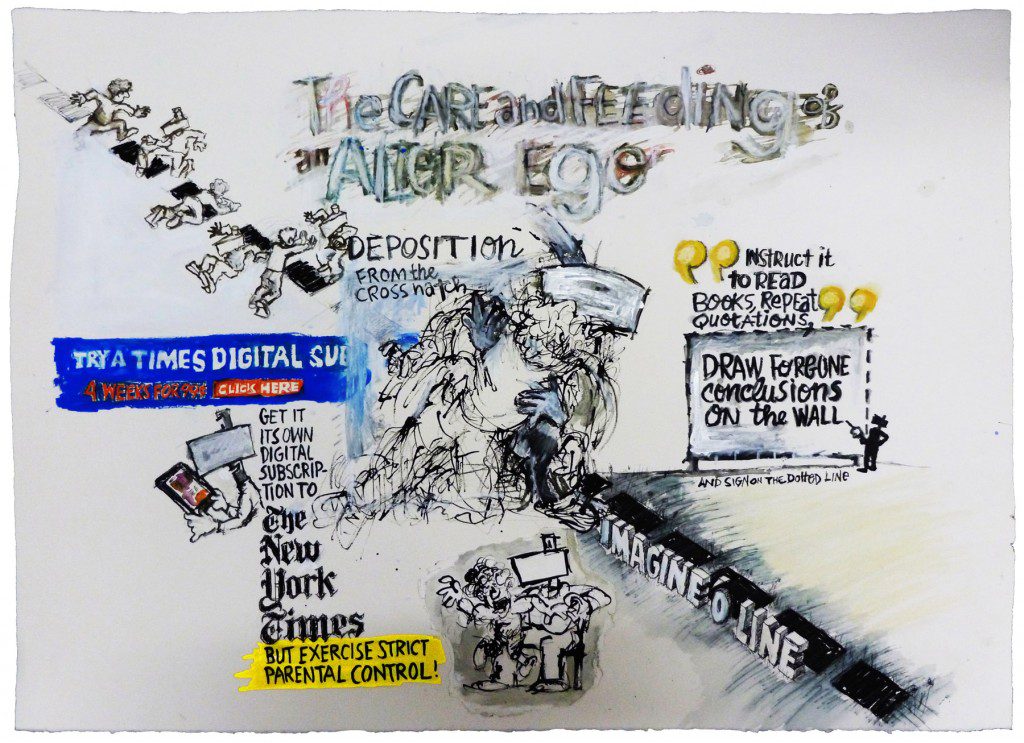
A running stream-of-consciousness dialog between the author and his alter ego developed as he and Howard Saunders journeyed across the contemporary cultural landscape. They encounter art, media, cultural myths, and politics before the Trump era. His motivation and inspiration come from nowhere and everywhere, for example. He has noticed how increasingly difficult it has become to find a parking spot in Williamsburg, where he lives part-time, and in Greenpoint, where he has a point-and-shoot studio.
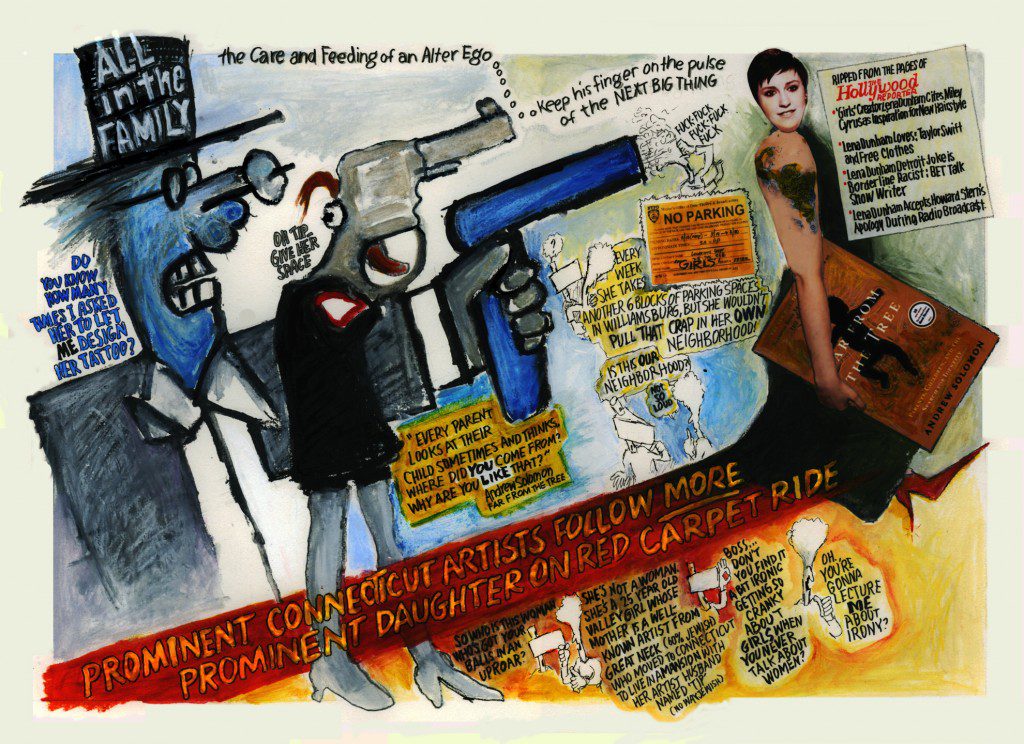
To the author, art can be miraculous, though hit and miss. But miracles, in and of themselves are ridiculous. Consider that Bishop Timothy Dolan in New York was engaged in a running war with with the Diocese of Peoria. Bishop Fulton J. Sheen, a tv personality, was in the throes of beatification when Bishop Dolan stepped in and said the body could not be moved to Peoria from its NYC resting place. At this moment the whole thing is still in adjudication, though folks keep dragging it up. Even MoMA lent credence to the foolishness by giving Rachel Harrison’s miracle Perth Amboy apparitions a room with a view.
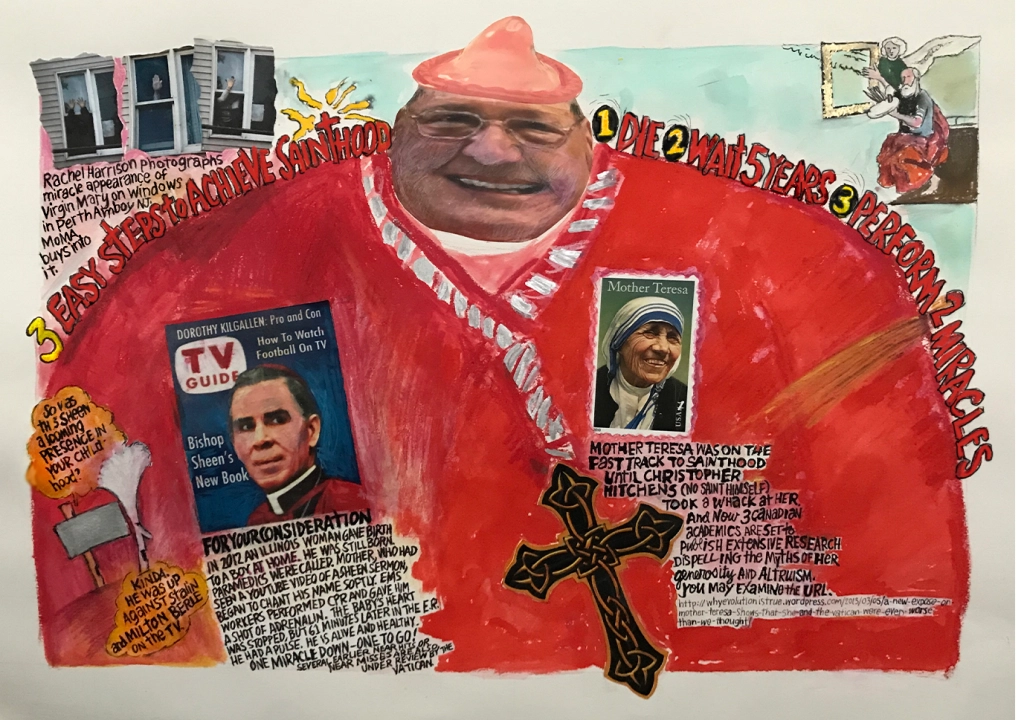
The New York Times, ever changing with the media environment, provides the author with an ever moving target. He was obsessed with appropriation, though he never thought about it as it has been defined. In the early 1970s he was a free lance illustrator with one client: Psychology Today Magazine located in Del Mar, CA. Along with a couple of other illustrators, he was tasked with mimicking illustrators the magazine couldn’t afford in their early days. His specialty, if you could call it that, was ‘appropriating’ the styles of Charles Saxon, R.O. Blechman, Robert Osborne, Shel Silverstein and Jules Feiffer. More recently Barbara Kruger has become an ear worm that he will return to when motivated. He doesn’t have to look very hard for her. She’s ubiquitous. Wannabes appear everywhere, even in the NY Times.
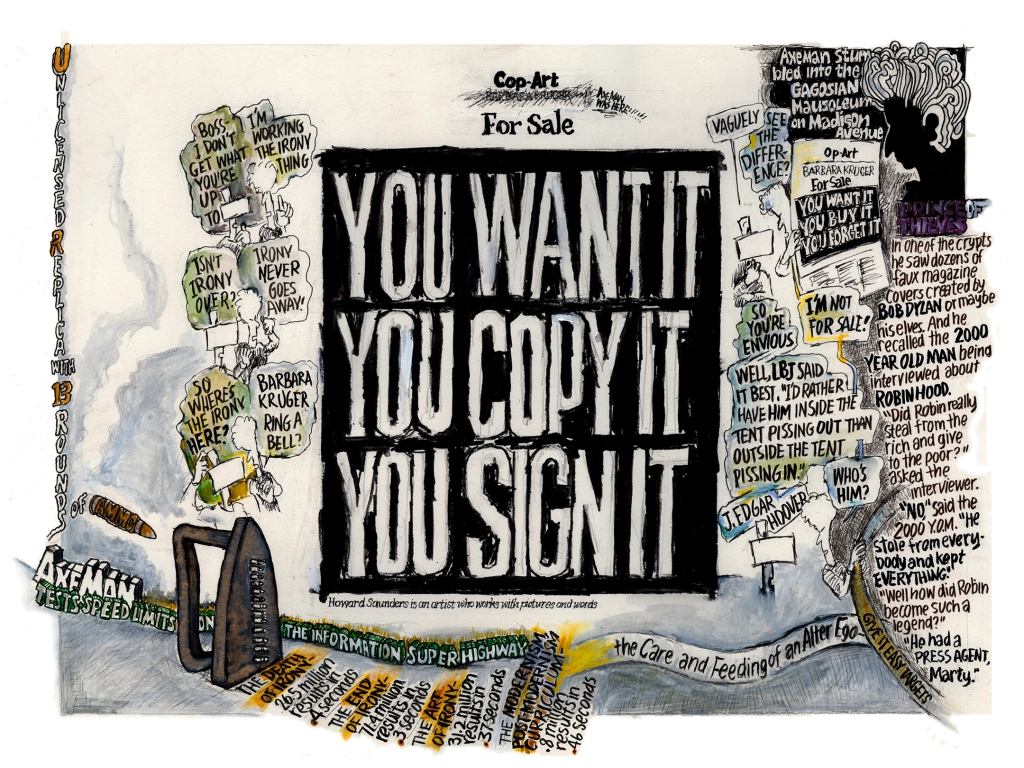
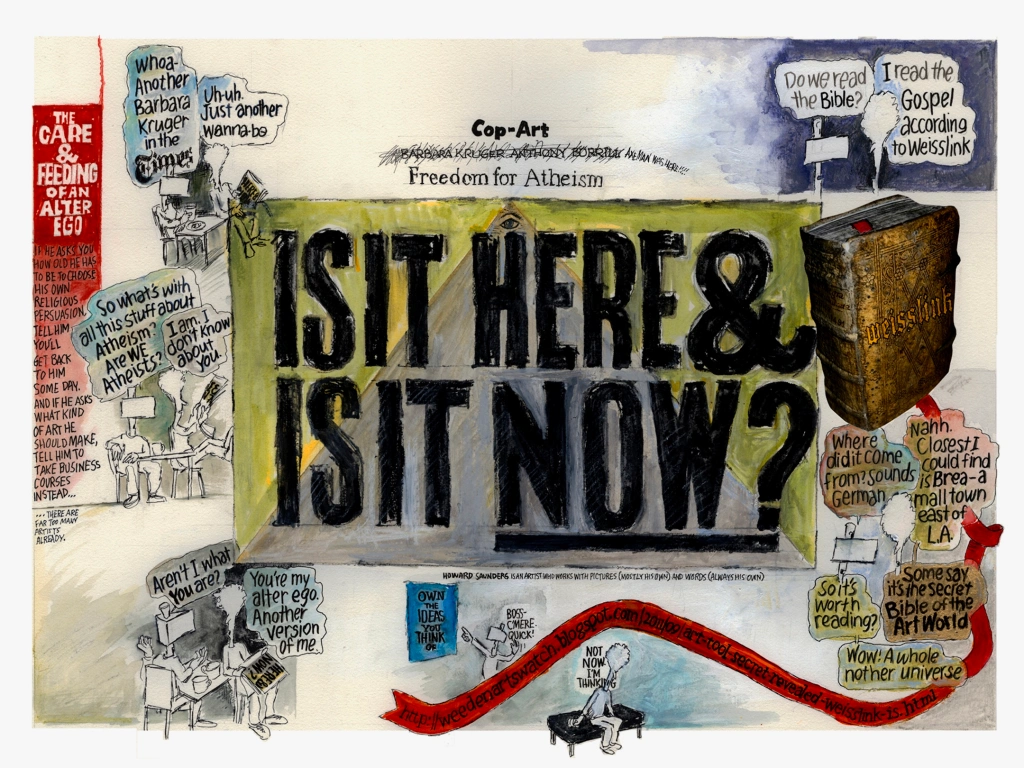

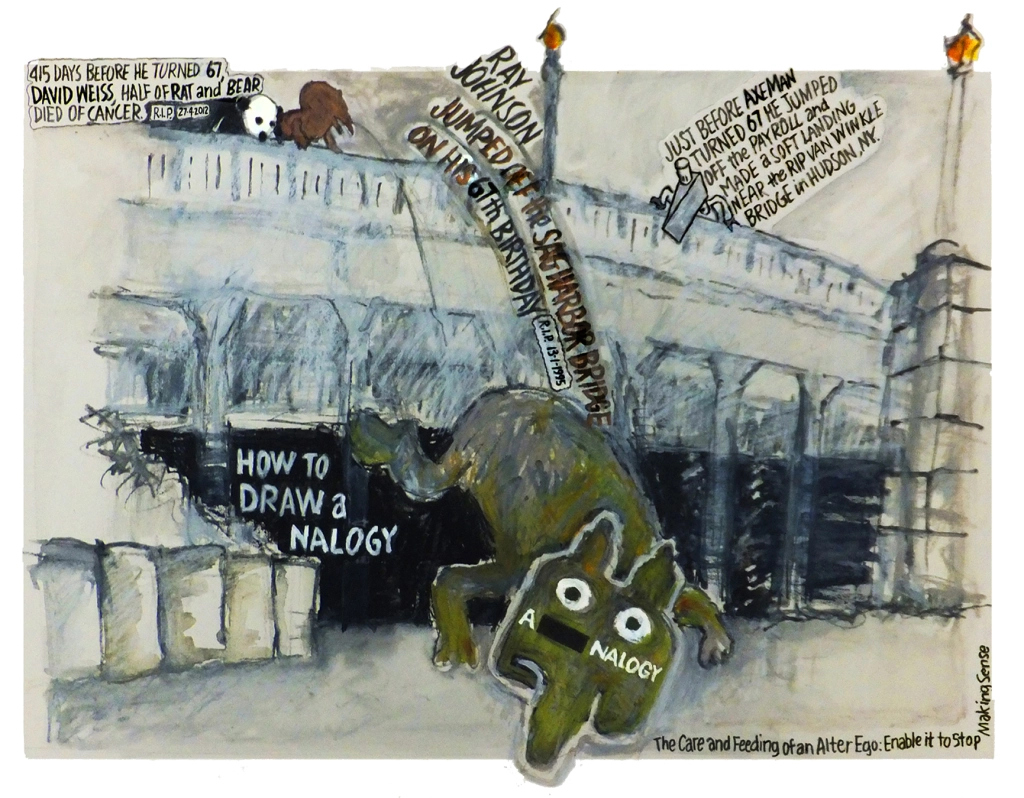
One of the two most influential artists he had ever been exposed to, and they came well into his career, were Ray Johnson and Philip Guston. Johnson’s particularly wacky narrative sensibility challenged all of his literal narrative inclinations. In truth, he had always been oblique, envisioning his own tombstone as a three-dot ellipsis. He began calling himself a non linear visual narrator off the top of his head when a gallerist asked him how he saw himself. The gallerist shrugged, said Okay, why not?

He had grown up with sports, all of them. Even more than his father who was captivated by only two. Boxing and horse racing. Something sputtered around 9/11. Something about the flag waving at Yankee Stadium, right at that moment, triggered a slow flight. Now he sees sports in social context. Like the Taking a Knee, for example.Which reminded him of Tommie Smith and John Carlos raised fists in the 1968 Olympics which coincided with his own flight into the counter culture and the anti-war movement. It might have played more of a part than he knew back then.
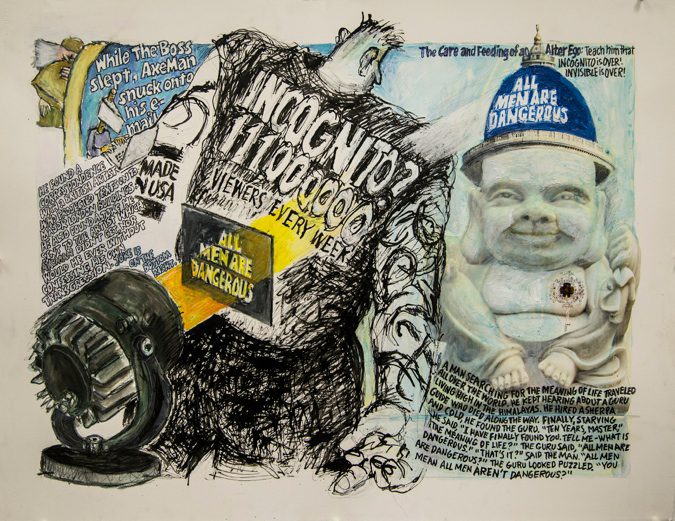
Sports = politics = art. Where does inspiration come from, really? He created a Kickstarter campaign in 2009 for a faux graphic memoir centered around Howard Saunders. It worked. One of the contributors was a London artist who specialized in public art utilizing large scale projections on historic public buildings. They corresponded for a while. He was not asked to make All Men are Dangerous, but the artist’s idea pushed a button. He sent the artist an early sketch. It became part of a presentation the artist staged in London for his own obsession with Star Trek.
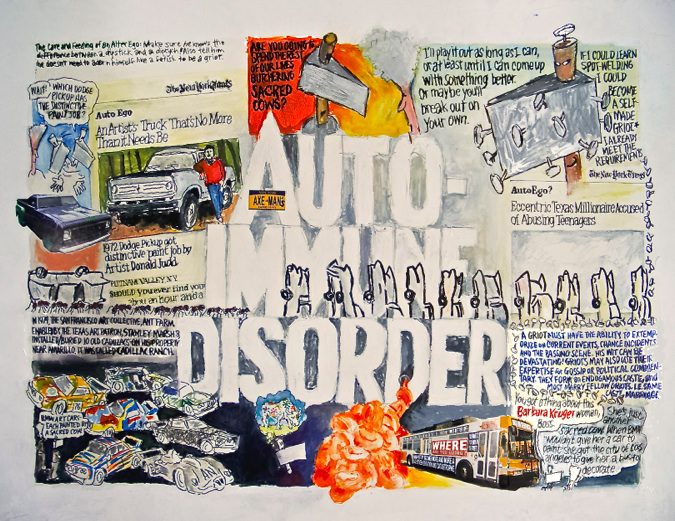
San Francisco, 1973-1977. He became acquainted with The Ant Farm Collective, a group of media marauders. They built and drove a custom made aerodynamic vehicle into a wall of burning tv sets on the 4th of July, and they travelled to Amarillo TX to bury various model Cadillacs face down in the deserted landscape. The ideas resonated for decades. They took on a life of their own. The result became Howard Saunders’ Auto Immune Disorder, a three part trilogy. Barbara Kruger makes another cameo.

He can’t let go of Cadillac Ranch. The discovery also coincided with a very significant moment when he met a union official who would become yet another mentor/father figure in his life. Tony Mazzocchi was the political director of the union that Karen Silkwood was a member of. It was Mazzocchi who was with David Burnham of the NY Times on the way to meet Silkwood who had pilfered files from the Kerr McGee nuclear facility in Oklahoma. The files revealed evidence of damaged fuel rods causing serious plutonium leaks. She was killed in a car crash (pictured above) in November, 1974, a couple of weeks after he met Mazzocchi in San Francisco and began working in the world of labor education. The death was ruled accidental, the files were never recovered, nobody believed it was an accident.
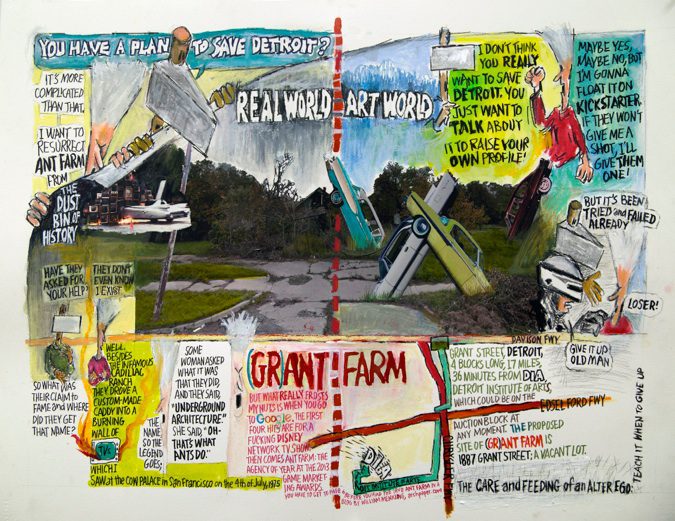
Saunders, having left gainful employment at age 66, has been making art only for himself and for the appetites of a few others who seem to be on diets. Nevertheless, he plows ahead dragging his alter ego with him. This aforementioned stream of consciousness dialog may be nothing more than talking to himself, but he welcomes it.
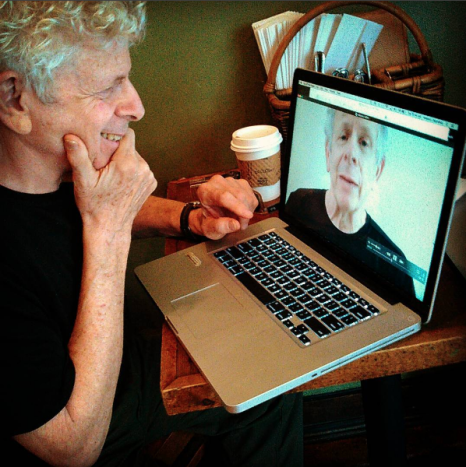

Philip Roth was not a target. He is merely a source of investigation into the endless examinations of the alter ego. Even Roth’s alter egos seem to have alter egos. Such fertile ground for the author and Howard Saunders. And while he’s at it, why not go to the dark side with Tom Waits to find more material.

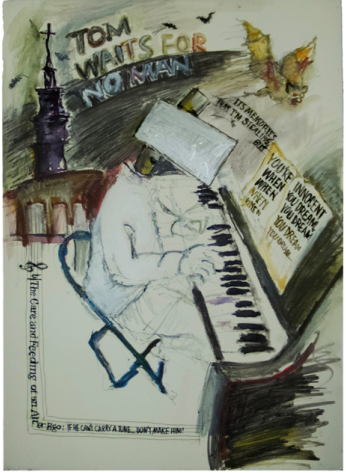
Finally, he needs a break from Howard Saunders. He wants to send him away for a while, but where? He reads an amazing novel, The Man Who Loved Dogs, about the assassination of Leon Trotsky written by the great Cuban novelist, Leonardo Padura. Does Howard Saundersgo to Havana? Mexico City? No. He goes to Paris to explore Cimitiere Pere Lachaise.

